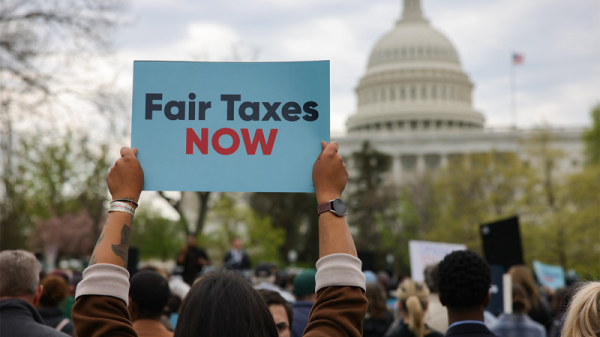Asking the American public to vote directly on abortion hasn’t gone terribly well for conservatives over the past half-century.
The abortion rights position has won on ballot measures more than 75 percent of the time across more than 50 votes in more than two dozen states. Red states have sometimes sided with abortion rights, and a blue state has yet to vote against them.
But even in that context, abortion rights are winning on the ballot as they rarely have — ever since the Supreme Court last year overturned Roe v. Wade.
You might be familiar with the basic numbers: In the seven states to vote on this issue since the fall of Roe, the abortion rights position has won all seven times. That includes four red states, after Ohio on Tuesday voted to enshrine the right to abortion in its state constitution. It joined fellow red states Montana, Kansas and Kentucky in voting in favor of abortion rights.
It’s fair to ask whether this actually marks a shift — or whether our new reality just underlined the opposition to abortion restrictions that already existed. By eliminating the constitutional right to abortion, the Supreme Court opened up the abortion issue for states to decide and, in an increasing number of cases, put it directly to voters, bypassing the legislatures.
It’s certainly some of the latter. But the numbers suggest that new ground is being broken in favor of abortion rights.
Abortion ballot measures have undergone multiple phases since 1970. Before Roe legalized abortion nationwide in 1973, voters were sometimes asked whether they wanted to legalize it in their states. Afterward came efforts from antiabortion forces to ban public funding for it, then to ban “partial-birth” abortion, then to enact parental notification laws, then to enact “personhood” laws, which would define the unborn as people. Mixed in were the occasional symbolic efforts to challenge the court by banning abortion.
The track records of such antiabortion efforts were spotty. But by last decade, those forces seemed to gain traction. They began getting measures on ballots in red, mostly Southern states to declare that those state constitutions included no right to an abortion. And four passed: in Tennessee in 2014, Alabama and West Virginia in 2018 and Louisiana in 2020.
This is where you begin to see a real post-Roe shift. The two states to vote on such a measure since Roe fell were both also clear red states, and they both rejected it.
One of the states, as mentioned, was Kentucky (the other was Kansas). Not only does Kentucky neighbor Tennessee, but it’s similar politically to the states that passed such measures. It has actually voted more Republican recently than Alabama, Louisiana and Tennessee. Yet despite Tennessee’s passing by five points a decade ago a measure saying that its constitution included no right to an abortion, Kentucky voted against the same proposal by five points.
Some other key data points, based on Ballotpedia’s compilation of historical abortion ballot measures:
Kentucky became the reddest state (judging by the most recent presidential vote) since 1994 to vote in favor of abortion rights. The only redder ones to do so were Wyoming, which rejected a full ban in 1994, and Alaska, which rejected a public funding ban in 1982.Ohio on Tuesday became the first red state since 1990 to have voters enshrine the right to abortion in the state constitution.While Ohio joined three other states that have enshrined abortion rights post-Roe, it actually marked the biggest over-performance for such a measure (56.6 percent) relative to Democrats’ share of the last presidential vote (45.2 percent). The measure got nearly the same percentage as in neighboring Michigan (56.7 percent), which Democrats won in 2020.The abortion rights position has over-performed Democrats’ presidential vote share by an average of nine points since 1970. But in 5 of 7 cases post-Roe, it has over-performed by double digits.
There are some caveats here, including that states didn’t used to feel the same impetus to vote on things like enshrining abortion rights into the state constitution. The Supreme Court had already taken care of that, after all — on a nationwide basis. So we don’t have a ton of directly comparable ballot measures.
But these results have surely injected an increasing amount of urgency behind abortion rights supporters getting this issue on as many ballots as possible in 2024. The most likely candidates would appear to be states like Arizona, Colorado, Florida, Nebraska, Nevada and South Dakota.
Precisely what will be on the ballot will matter, as some measures tend to get more or less support than others. But judging by recent history — and the fact that the reddest state on that list is in line with Kentucky — all would seem to have a fighting chance.

































